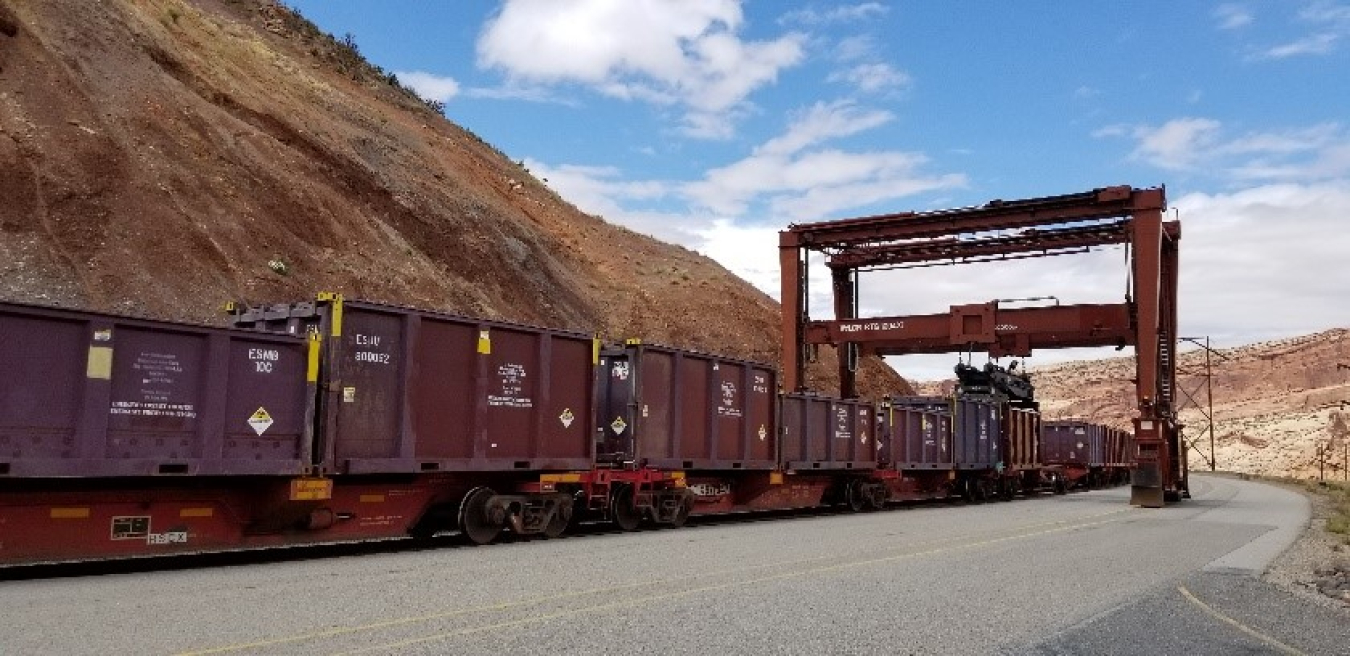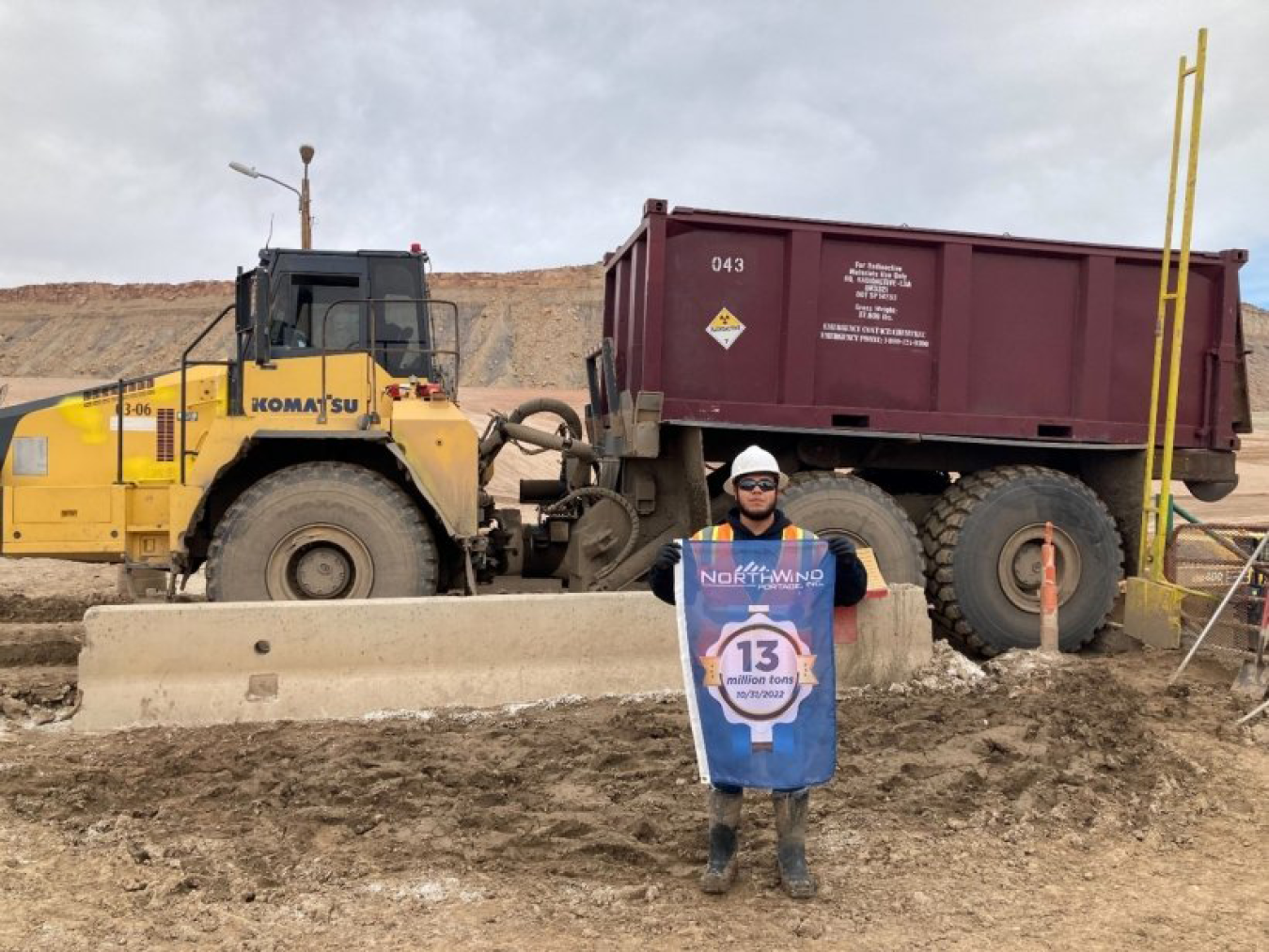Overview
The Moab Uranium Mill Tailings Remedial Action Project (Moab Site or Project) is located in southeastern Utah. Its 480-acre Moab Site includes a former uranium-ore processing facility that operated under private ownership from 1956 to 1984. The Project includes relocation of the estimated 16-million-ton pile of uranium mill tailings and other contaminated material near the Colorado River to an engineered disposal cell constructed 30 miles north near Crescent Junction, Utah. The scope also includes remediation of contaminated groundwater at the Moab Site. After contaminated soil, tailings, debris, vicinity properties, and groundwater are remediated, the Moab Site may be transferred to the Office of Legacy Management (LM) for continued groundwater monitoring and potential reutilization of the site. The Crescent Junction Site will also be transferred to LM for monitoring and required stewardship of the disposal cell.

Calendar Year 2022 Accomplishments
- Disposed of a cumulative total of 13 million tons of uranium mill tailings out of the original total of 16 million tons --- meeting an EM 2022 priority
- Removed a cumulative total of more than 979,000 pounds of ammonia and 5,578 pounds of uranium from groundwater, diverting those constituents from the Colorado River
- Improved the disposal cell cover to make it better suited for the site’s arid climate increase long-term performance and reliability
Key Regulatory Milestones 2023–2033
- Submittal of Groundwater Compliance Action Plan (GCAP) to Nuclear Regulatory Commission - 2025
Planned Cleanup Scope 2023–2033
Over the next several years, DOE expects to ship nearly one million tons of uranium mill tailings annually to the Crescent Junction disposal site. As a result, DOE expects to complete the relocation and disposal of the pile by 2027. It will take an additional two years to complete the restoration of the Moab Site, dispose of potentially contaminated equipment and intermodal containers, and install the cover on the disposal cell.
DOE also plans to continue transportation and disposal of oversize debris from the Moab Site, including 14 autoclaves decommissioned by the Atlas Minerals Corporation. They are assumed to weigh at least 40 tons each and could be filled with asbestos. Transportation of oversize debris will continue through 2027.

This sealed steel container of uranium mill tailings brought the Moab Uranium Mill Tailings Remedial Action Project’s cumulative total to 13 million tons of the material removed from the Moab Site for disposal at the Crescent Junction, Utah, disposal cell. Moab Project Laborer Alfredo Tellez is pictured holding a banner marking the achievement.
Post-2033 Cleanup Scope
The main cleanup activities at the Moab Site are scheduled to be completed in 2029 with site responsibility potentially transferred to LM approximately two years later after the remaining site restoration work is completed. The Crescent Junction Site will be transferred to LM in this time frame also.
Every five years, a group of Grand County, Utah, volunteers revisit a community vision for the Moab Site should the property be available for reuse after the Project is complete. Stakeholders involved in the update include representatives from the city of Moab; the Bureau of Land Management; Grand County; Utah Division of Forestry, Fire and State Lands; the National Park Service; and local citizens. The public’s vision for reuse of the site includes: a park with an event center, multipurpose play areas, a lined lake or swimming pool facility, transportation facilities, a boat ramp, federal offices, a plaza with an “artist village” and performing arts center, trails, and an information center. The committee will revisit the community vision again in 2023.

